
The Naval Postgraduate School (NPS) is a public graduate school operated by the United States Navy and located in Monterey, California.

The United States Navy's Center for Information Warfare Training (CIWT) is one of the learning centers of Naval Education and Training Command, headquartered on Naval Air Station Pensacola Corry Station in Escambia County, Florida. It is responsible for the development of education and training policies for over 22,000 members of the Information Warfare Corps in the fields of cryptology and intelligence, along with the cyber realms of information operations and technology, and computer systems and networks. The Center also oversees Language, Regional Expertise and Culture.
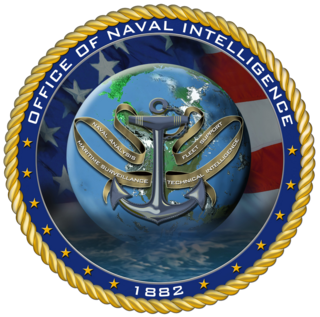
The Office of Naval Intelligence (ONI) is the military intelligence agency of the United States Navy. Established in 1882 primarily to advance the Navy's modernization efforts, it is the oldest member of the U.S. Intelligence Community and serves as the nation's premier source of maritime intelligence.
An unrestricted line officer is a designator given to a commissioned officer of the line in the United States Navy, who is eligible for command at sea of the navy's warfighting combatant units such as warships, submarines, aviation squadrons and SEAL teams. They are also eligible to command the higher echelons of those units, such as destroyer and submarine squadrons, air wings and air groups, and special warfare groups.
A restricted line officer is a designator given to a United States Navy and Navy Reserve line officer who is not eligible for Command at Sea. There are many different types and communities, including Engineering Duty Officers, Aerospace Engineering Duty Officers, Aerospace Maintenance Duty Officers, Naval Intelligence Officers, Cryptologic Warfare Officers, Information Operations Officers, Foreign Area Officers, Public Affairs Officers, Naval Oceanographers, Information Professionals, and Human Resources.
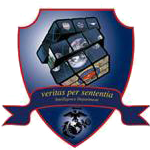
Marine Corps Intelligence is an element of the United States Intelligence Community. The Director of Intelligence supervises the Intelligence Department of HQMC and is responsible for policy, plans, programming, budgets, and staff supervision of Intelligence and supporting activities within the U.S. Marine Corps as well as supervising the Marine Corps Intelligence Activity (MCIA). The Department supports the Commandant of the Marine Corps (CMC) in his role as a member of the Joint Chiefs of Staff (JCS), represents the service in Joint and Intelligence Community matters, and exercises supervision over the MCIA.
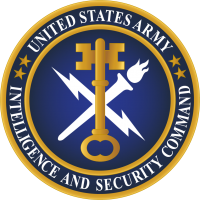
The United States Army Intelligence and Security Command (INSCOM) is a direct reporting unit that conducts intelligence, security, and information operations for United States Army commanders, partners in the Intelligence Community, and national decision-makers. INSCOM is headquartered at Fort Belvoir, Virginia.
The structure of the United States Navy consists of four main bodies: the Office of the Secretary of the Navy, the Office of the Chief of Naval Operations, the operating forces, and the Shore Establishment.
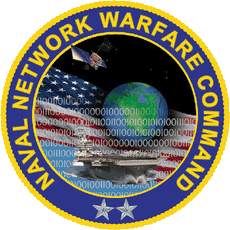
Naval Network Warfare Command (NETWARCOM) is the United States Navy's information operations, intelligence, networks, and space unit. Naval Network Warfare Command's mission is to execute, under Commander TENTH Fleet Operational Control, tactical-level command and control of Navy Networks and to leverage Joint Space Capabilities for Navy and Joint Operations.
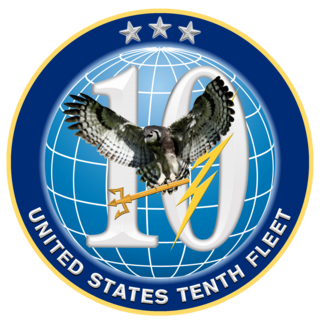
The U.S. Tenth Fleet is a functional formation and a numbered fleet in the United States Navy. It was first created as an anti-submarine warfare coordinating organization during the Battle of the Atlantic in the Second World War. It was reactivated as a force provider for Fleet Cyber Command on 29 January 2010. U.S. Tenth Fleet serves as the numbered fleet for U.S. Fleet Cyber Command and exercises operational control of assigned naval forces to coordinate with other naval, coalition and Joint Task Forces to execute the full spectrum of cyber, electronic warfare, information operations, and signal intelligence capabilities and missions across the cyber, electromagnetic, and space domains.

The Naval Meteorology and Oceanography Command (COMNAVMETOCCOM) or CNMOC, serves as the operational arm of the Naval Oceanography Program. Headquartered at the Stennis Space Center in Mississippi, CNMOC is an echelon three command reporting to United States Fleet Forces Command (USFLTFORCOM). CNMOC's clemency is globally distributed, with assets on larger ships, shore facilities at fleet concentration areas, and larger production centers in the US.
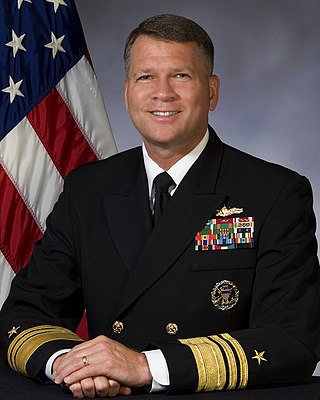
David John "Jack" Dorsett is a corporate vice president for cyber and C4 at Northrop Grumman, and a retired vice admiral of the U.S. Navy. He was the first Deputy Chief of Naval Operations for Information Dominance and 63rd Director of Naval Intelligence. He served as the Director of Intelligence, Joint Chiefs of Staff from 2005 to 2008 prior to assuming his position on the Chief of Naval Operations staff.
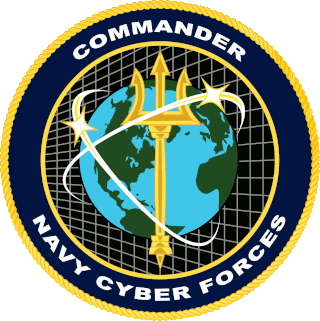
Navy Cyber Forces (CYBERFOR) was the type commander for the U.S. Navy's global cyber workforce. The headquarters was located at 115 Lake View Parkway in Suffolk, Virginia. CYBERFOR provided forces and equipment in cryptology/signals intelligence, cyber, electronic warfare, information operations, intelligence, networks, and space. Navy Cyber Forces was an operational component of the U.S. Navy Information Dominance Corps. CYBERFOR has been absorbed into the Naval Information Forces command.

The U.S. Marine Corps Forces Cyberspace Command is a functional formation of the United States Marine Corps to protect critical infrastructure from cyberattack. Marine Corps Forces Cyberspace Command is the Marine Corps component to U.S. Cyber Command. It comprises a command element, the Marine Corps Cyber Operations Group, and the Marine Corps Cyber Warfare Group, a total of approximately 800 personnel. MARFORCYBER was established on January 21, 2010 under the command of LtGen George J. Flynn,. As of 7 July 2021, MajGen Ryan P. Heritage is in command.

RDML Gretchen S. Herbert is a retired United States Navy officer who commanded the Navy Cyber Forces.

The U.S. Fleet Cyber Command is an operating force of the United States Navy responsible for the Navy's information network operations, offensive and defensive cyber operations, space operations and signals intelligence. It was created in January 2010 "to deter and defeat aggression and to ensure freedom of action to achieve military objectives in and through cyberspace". U.S. Tenth Fleet was simultaneously reactivated as its force provider. Since it was founded, the command has grown into an operational force composed of more than 16,000 active and reserve sailors and civilians organized into 27 active commands, 40 Cyber Mission Force units, and 27 reserve commands around the world.

Michael S. Rogers is a former United States Navy admiral who served as the second commander of the United States Cyber Command (USCYBERCOM). He concurrently served as the 17th director of the National Security Agency (NSA) and as chief of the Central Security Service (CSS) from April 3, 2014. Prior to that, Rogers served as the Commander of the Tenth Fleet and Commander of the United States Fleet Cyber Command. During his tenure, he helped transform and elevate U.S. Cyber Command into a unified combatant command. He relinquished command on May 4, 2018 to his successor, Paul M. Nakasone. He retired from active duty in the United States Navy on June 1, 2018.

Naval Information Forces (NAVIFOR) is an Echelon III command under US Fleet Forces Command, (USFLTFORCOM). It is the Type Command (TYCOM) for meteorology and oceanography, cryptology/SIGINT, cyber, electronic warfare, information operations, intelligence, networks, and space disciplines. Like other TYCOMs, this is the manpower, training, modernization, and maintenance component for these disciplines. NAVIFOR's mission is to support operational commanders ashore and afloat by providing combat-ready information warfare forces, which are forward deployable, fully trained, properly crewed, capably equipped, always ready, well maintained and combat sustainable. The current commander of NAVIFOR is Vice Admiral Kelly Aeschbach.
The Enlisted Information Warfare Specialist Insignia (EIWS) is a military badge of the United States Navy which was created in 2010. The insignia recognizes those members of the Navy's enlisted force who have acquired the specific professional skills, knowledge, and military experience that result in qualification for service in the information warfare activities of the Navy.















